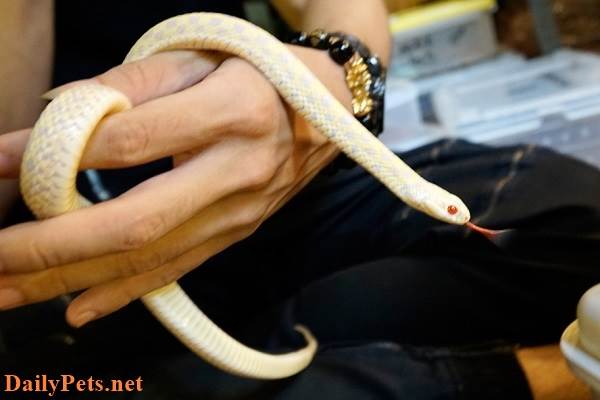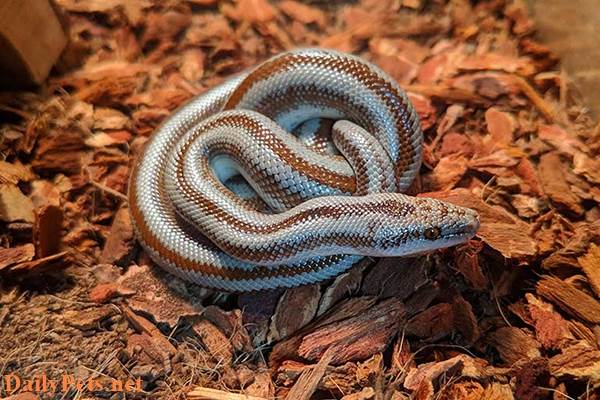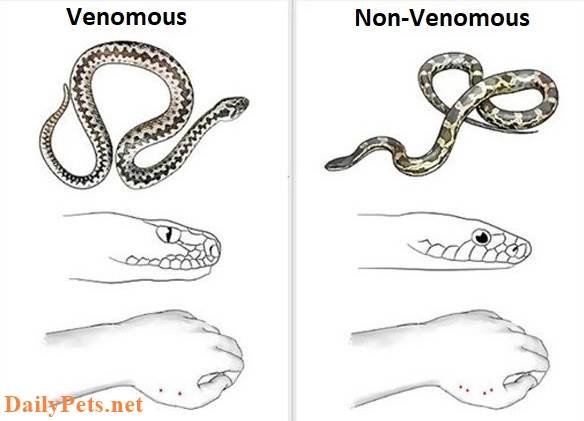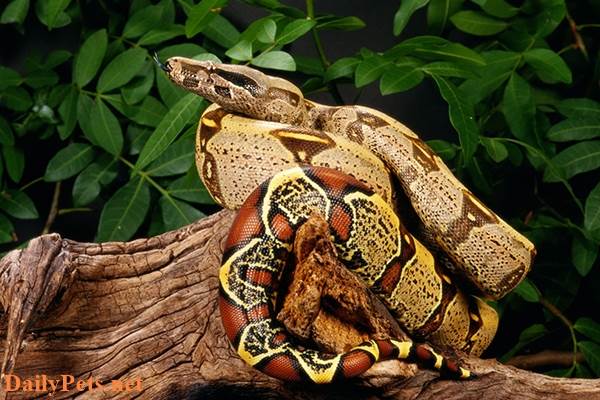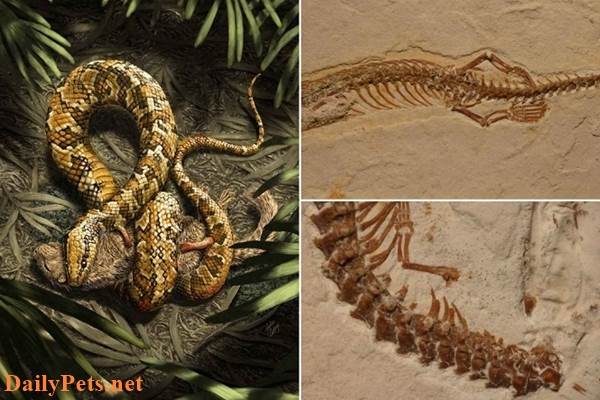Therefore, the corn snake has become a favorite pet snake worldwide.
Join DailyPets.net to learn about the origin, characteristics, and care of Corn snakes through this article.
Corn snake origin
Corn snakes (Pantherophis guttatus) are native to North America and were first noticed in Native American corn huts, where these snakes would eat rats. corn. These snakes still play a very important role in the wild today because they help control rodent populations very effectively. They are members of the large snake family called the Colubridae.
Corn snakes are medium-sized and like to come out for food around dusk and early evening. Their natural habitat ranges from fields to woodland, and they can often be found crawling through southern roads just before sunset.
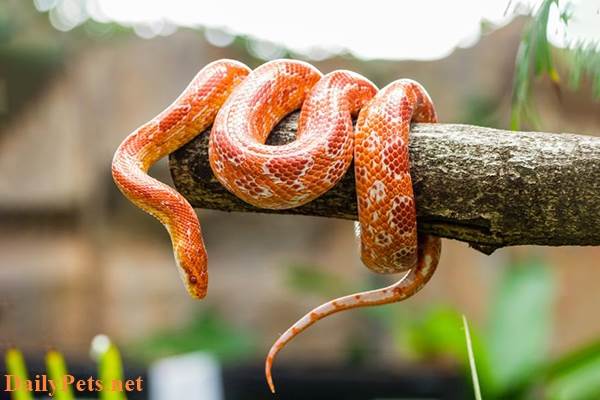
Corn snake.
Although the wild population of Corn snakes is also numerous and common, they are still heavily bred by humans to achieve some amazing morphologies and color patterns. This is why this snake is being kept as a popular pet today.
Characteristics of Corn Snakes
This snake has a very special and attractive body color and pattern. Therefore, they are very popular and chosen by people to keep as pets. Here are the salient features of this species.
Size of Corn Snake
Corn snakes today are native to many parts of the world, especially North America, where they are concentrated in large numbers. So the size of your adult pet snake will vary depending on its species.
Some Smaller snakes found in southern Florida and the Florida Keys reach sizes as low as 76-80cm, while species from the lower mid-Atlantic states can grow to 1.5-1.8. m. Compared to pythons, this species has a relatively modest width and weight; they only weigh about 2kg.
Color of Corn Snake
Corn snakes are so popular for pets because of their variety of colors and appearances. Breeders are constantly coming up with new color variations and morphs. That said, not all of these snakes possess striking patterns and colors.
Because the demand for snakes as pets is very popular, owners are fond of snakes with strange and mutant colors. So there were many snakes with mutant colors born.
Corn snake lifespan
Corns that are kept as pets, other than those in the breeding herd, tend to live longer and happier than those raised for breeding. The record for the oldest corn snake in captivity is 32 years and 3 months, and snakes kept in regular zoos live for about 20 years.
If you’re considering adopting a Corn Snake as a pet, just know you’re doing it for a long time.
Are Corn Snakes Poisonous and Dangerous?
Corn snakes are non-venomous snakes; they are completely harmless to humans. In addition, they are also beneficial to humans; they help people chase and hunt corn-eating mice. In addition, this snake is being kept as a very popular pet.
Popular types of corn snakes
Currently, there are quite a few species of Corn snakes in the world, and here are some of the most common species that you can refer to:
Mexican Corn Snake
The breed is found adjacent to Mexico in west and south Texas. They have a distinct silver tip and green color that fades over time to brown.
Keys Corn Snake
Also known as Rosy Ratsnakes, this species is found in some of these snakes in Florida. A reduction in dark pigmentation, a broken belly shape, and a paler overall appearance marks them. This snake can range in color from silver to orange.
Slowinski’s Corn Snake
Slowinski’s hail from western Louisiana and the pine forests of eastern Texas. This snake comes in a variety of colors, most of which are not too striking compared to the average snake.
How to take care of Corn snakes
If you are in need of raising a snake as a pet, DailyPets.net would like to share with you the basic experience of taking care of this pet most effectively. Specifically:
Corn snake cage
You can use a plastic cage or a foam box to raise it when caring for this snake. When raising, you only raise 1 animal in a cage to ensure safety and the most stable development. In addition, the Corn snake is a species that can climb very quickly, so you need to pay attention to the cage without openings so that they do not escape.
You should put more climbing plants or rocks in the cage so the snakes can climb and lie in the sun. In addition, the cage should have water troughs and holes for snakes to hide. In particular, you should put a layer of wood chips under the floor of the cage to make them most comfortable.
Habitat for Corn Snakes
Another feature required for a good snake enclosure is a hiding place. If snakes are in contact with people or the environment 24/7 and don’t find any privacy, they become stressed and sick. You can make your concealed box from a shoebox or plastic plate or buy a fancy box from a reptile den.
Snakes prefer burrowing to climbing, but you can place branches and trees in your pet’s cage if you like this look. Note that, like everything else in a snake’s cage, you need to clean it periodically. Whether you use live or fake plants is up to you; make sure they are snake-safe.
Temperature and light for Corn snake cages
Corn snakes do not require light, but for some species, the color looks better in daylight, so if you want to use fluorescent bulbs to increase the beauty of your pet. Whatever you decide, never put a light bulb inside your snake’s cage, as snakes tend to curl up around lights and will burn their skin.
Corn snakes happily enjoy a wide range of temperatures in their cages. This gives them thermoregulation, aids digestion, and can help keep their immune systems strong.
They thrive in the same temperature range as humans, from 21 to 26 degrees Celsius. Try to prepare an extra “hot spot” that the snake can touch when it wants to warm up and keep the thermometer there to keep it warm. Make sure the snake is always in a stable temperature range.
Humidity for Corn Snakes
Last but not least is the water to bathe them in. Since this species is native to the humid Southeastern United States, they prefer 40-60% or more humidity.
Most homes have lower relative humidity than outdoors, which can cause problems with dehydration and incomplete shedding. To avoid these and other health problems, invest in a suitable hygrometer to monitor the humidity levels of your surroundings and reserve for a wetter environment if needed.
You can cover some of the main ventilation areas of the cage to prevent moisture from escaping, try placing newspaper or aluminum foil over half of the screen of the aquarium, or add a second, larger dish of water inside the box.
They love to soak in water, but if they’re too hot or dry, they’ll stay submerged for long periods. Keep track of your snake’s immersion time. Soaking for long periods can be a sign of illness, improper barn temperature, or tick infestation.
What do corn snakes eat?
It’s relatively easy to feed your Corn snakes. They are strict carnivores, eating almost exclusively warm-blooded prey such as rodents and birds in the wild.
A good rule of thumb for assessing the correct food size for your snake is to choose foods that don’t exceed one and a half times the snake’s mid-body circumference.
This species loves to eat mice and small rats, usually once or twice a week. They love to hunt and feed, so it’s best to use live or pre-killed prey and defrost it.
Young snakes may begin to eat after shedding their scales after birth. For young snakes 25-30cm long, a baby mouse (a baby mouse without hair) is the perfect first meal.
Adult snakes 91-122cm in length do well with one to two appropriately sized prey every one to two weeks.
For snakes between 137 and 152cm in length, a meal may include one adult rat, two pups, or one unweaned rat.
Tips for feeding corn snakes
Always feed snakes one at a time, allowing your snake to finish digesting its meal for 24 hours before attempting to handle it, or you risk regurgitation; Never leave a live predator in your snake’s cage for long periods. Letting predators live in your snake enclosure can lead to injury when prey bites the snake.
